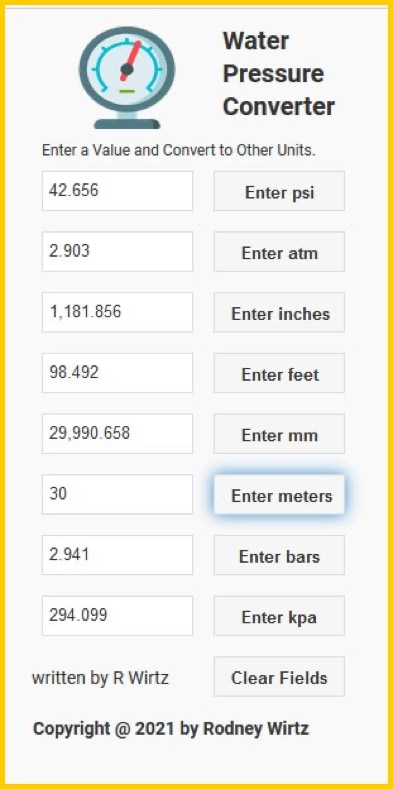Water Pressure Converter

Webapp’s QR code to scan with phone.

It’s a jungle out there!
There is a lot of different pressure units in use around the world and sometimes this can be very confusing and may cause dangerous misunderstandings. In this blog post I will discuss the basics of different pressure units and different pressure unit families.
What is pressure?
When I talk about pressure in this post, it does not refer to the stress you may be suffering in your work, but to the physical quantity. It is good to first take a quick look at the definition of pressure, this will also help to better understand some of the pressure units.
If you remember the studies of physics in school … as most of us don’t remember… a short reminder is in order: pressure is defined as force per area perpendicular to the surface. That is often presented as formula p = F/A. Pressure being indicated with the letter “p”, although capital letter “P” can also be seen being used in some occasions.
So what does this force per area mean in practice? It means that there is certain force effecting to a specified area. When we look at force, it is specified being Mass x Gravity. As there are so many different engineering units used for both mass and area, the number of combinations of these is huge. Plus there are also a lot of pressure units that do not directly have the mass and area in their names, although it often is in their definition.
It is good to notice that in practice the “force” is not always included in the pressure unit names. For example pressure unit kilogram force per square centimeter should be indicated as kgf/cm², but often it is indicated just as kg/cm² without the “f ”. Similarly, pound force per square inch (pfsi) is normally indicated as pounds per square inch (psi).
